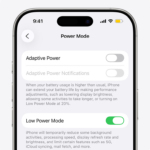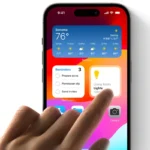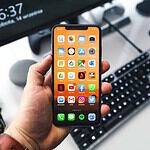Purchasing a refurbished MacBook can be a sensible choice for buyers looking to save money while still obtaining a device that meets their needs. Refurbished models often come with a degree of warranty and assurance that they’ve been tested and certified for resale, typically by qualified technicians. Although these warranties may be shorter than those for brand-new products, they do provide some level of protection against initial defects.
While new MacBooks offer the latest features and full warranty, the refurbished market opens the door to significant savings. Buyers can expect to find discounts ranging from 15% to 70% off the original price, making these devices particularly attractive for budget-conscious consumers or those not requiring the newest specs. It is crucial to purchase refurbished MacBooks from reputable sellers to ensure the quality and reliability of the product.
Buying a MacBook is a big investment. With new models often costing $1,500–$3,500, many people look at refurbished options as a way to save money without sacrificing quality. But is it really worth it? Let’s break down the cost savings, performance trade-offs, and what you need to check before buying.
1. What “Refurbished” Really Means
A refurbished MacBook is not the same as used.
- Apple Certified Refurbished: Devices are tested, repaired with genuine parts, cleaned, and come with a 1-year warranty (extendable with AppleCare).
- Third-Party Refurbishers: Quality can vary, but reputable sellers also test, replace faulty parts, and usually offer a warranty.
- Used/Marketplace Sales: Sold “as is,” with no testing, warranty, or guarantees.
👉 Always confirm whether you’re buying certified refurbished or just secondhand.
2. Cost Benefits
- Savings: Refurbished MacBooks typically cost 15–30% less than brand-new models (source: ZDNet).
- Better Specs for the Price: You may be able to afford a higher-tier model (e.g., M3 Pro instead of base M3) for the same budget.
- Depreciation Advantage: Macs hold value well, but buying refurbished means you skip the steepest part of the depreciation curve.
3. Performance Benefits
- Apple Silicon Longevity: Even older M1 and M2 MacBooks still perform strongly in 2025, capable of handling professional workloads like video editing, coding, and design (source: Computer Overhauls).
- Battery & Parts: Certified refurb units often come with new batteries and outer shells if needed, so they feel nearly new.
- Software Support: Apple typically supports Macs with macOS updates for 7–8 years, so even a 2–3 year old refurbished model has plenty of life left.
4. What to Check Before Buying
- Warranty – Apple’s refurb store is safest; third-party sellers should offer at least 90 days.
- Battery Health – Ask for cycle count if not replaced.
- Year & Chip – Aim for at least an M1 (2020) or newer for long-term support.
- Storage & RAM – These can’t be upgraded later; buy enough upfront.
- Return Policy – Ensure you can return it if the device doesn’t meet expectations.
5. Who Should Buy Refurbished?
✅ Students or professionals who want Mac performance but need to save money
✅ Creatives who want higher specs (Pro/Max chips) without paying premium prices
✅ Anyone who values warranty-backed reliability but doesn’t need the absolute latest model
❌ Not ideal if you always want the newest design or features (e.g., OLED screens, latest ports).
Final Verdict
A refurbished MacBook is absolutely worth it in 2025 if you buy from Apple or a trusted refurbisher. You’ll save hundreds of dollars, get near-new performance, and still enjoy warranty protection. For most users, the trade-offs are minimal compared to the cost savings.
Key Takeaways
- A refurbished MacBook can offer substantial savings.
- Warranties are available but may be shorter than new models.
- Buying from reputable sources is important for quality assurance.
Understanding Refurbished MacBooks
This section explores the essentials of refurbished MacBooks including their definition, the standards they meet, and the coverage they come with.
Definition and Quality of Refurbished Macs
Refurbished products are items returned to Apple or authorized partners. They undergo thorough testing and restoration to full working condition. Apple ensures these units meet high-quality standards before sale.
Certification and Testing Procedures
Every refurbished MacBook from the Apple Refurbished Store has been through a certified testing process. Technicians perform full tests, replace any faulty parts, and clean the product. Apple’s quality assurance is just like new MacBooks.
Warranty and Protection Plans
Refurbished MacBooks come with warranties and options for extended coverage. Customers get a 1-year warranty which can be extended by purchasing AppleCare for additional protection. This warranty mimics that of new Apple products, elevating buyer confidence.
Advantages and Considerations When Buying
When looking at refurbished MacBooks, it’s important to weigh cost-effectiveness against potential risks. Buyers should know what benefits they might gain and what to watch out for.
Cost Savings and Price Comparison
Refurbished MacBooks offer significant savings, often 10 to 30 percent cheaper than new models. For example, a MacBook Pro might be discounted by a few hundred dollars, providing more budget flexibility. It is essential to compare these prices with new units to understand the actual savings.
Selection and Available Models
The availability of various models like the MacBook Pro, MacBook Air, and Mac Mini can be limited. Buyers should check reputable sellers who often have a range of refurbished options. It’s worth checking the ratings system of the seller to ensure reliability.
Environmental Benefits and Sustainability
Buying a refurbished MacBook is a green choice. It extends the life of the device and reduces electronic waste. This choice aids sustainability efforts by minimizing the demand for new resources.
Potential Risks and How to Mitigate Them
There’s a stigma attached to buying used Macs due to risks like scams or faulty hardware. To mitigate these, one should buy from reputable sellers that provide warranties and thorough testing. It’s better to avoid deals that seem too good to be true as they can lead to more expensive issues down the line.







